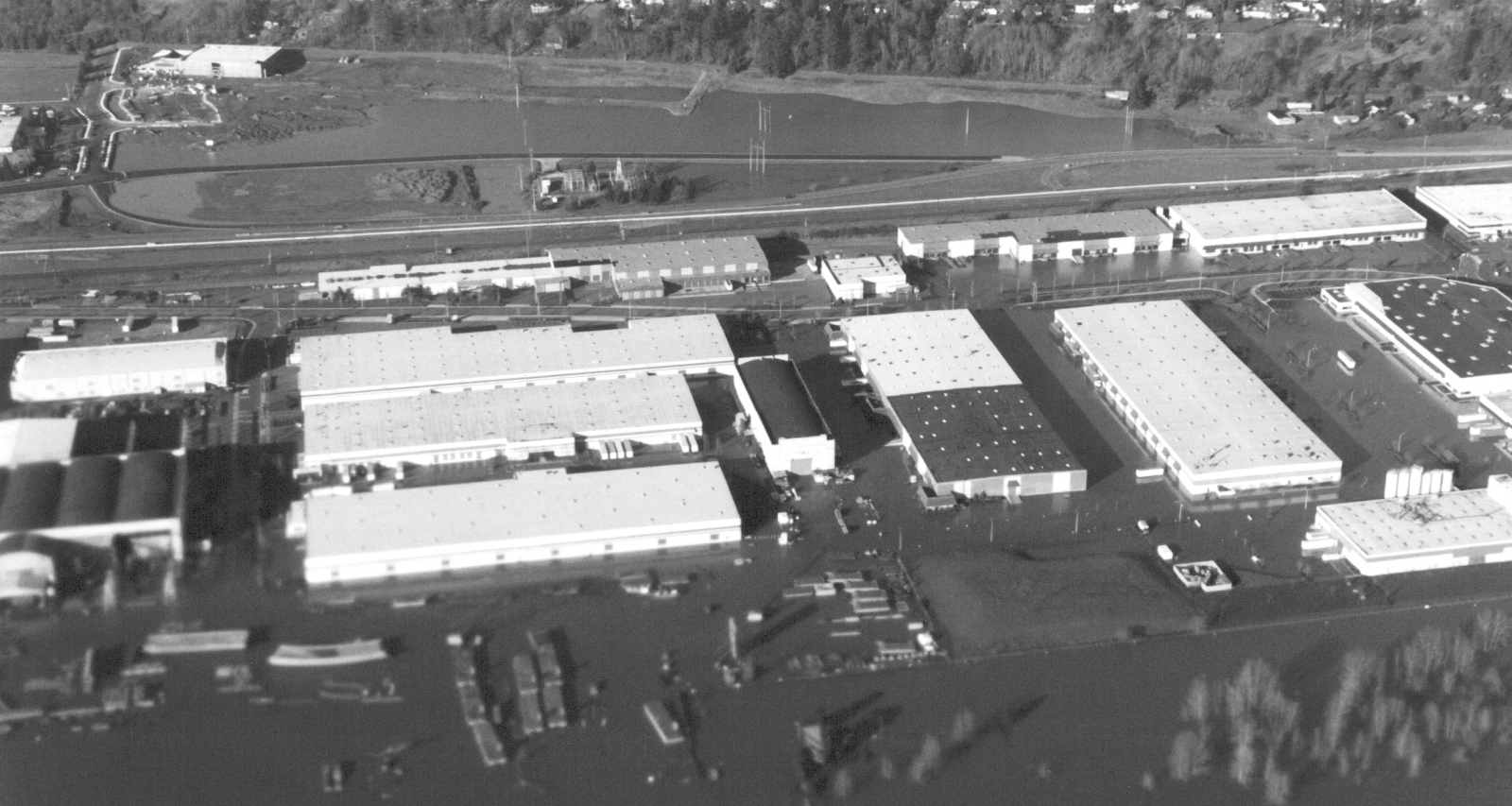Columbia River flooding, February 1996
The Columbia River has a long history of flooding. Flood stage for the river, as measured near the Port of Vancouver, is 16 feet.
The following are the 25 historic crests of the Columbia River, as well as what you can expect when the river reaches certain heights.
All information is courtesy of the National Weather Service.
- June 7, 1894, 33.6 feet
- June 13, 1948, 31 feet
- June 1, 1948, 30.8 feet
- Dec. 25, 1964, 27.7 feet
- June 4, 1956, 27.6 feet
- Feb. 9, 1996, 27.2 feet
- June 19, 1933, 26.3 feet
- May 31, 1928, 26.2 feet
- June 12, 1921, 26 feet
- June 26, 1950, 25.9 feet
- June 16, 1903, 25.6 feet
- Jan. 19, 1965, 25.44 feet
- June 22, 1917, 25.3 feet
- June 3, 1916, 25.3 feet
- June 13, 1913, 25.2 feet
- Jan. 3, 1997, 22.55 feet
- June 12, 1972, 21.5 feet
- June 22, 1974, 21.1 feet
- Jan. 24, 1970, 19.54 feet
- June 5, 1997, 19.03 feet
- Dec. 1, 1995, 18.5 feet
- March 30, 2017, 17.6 feet
- April 27, 1996, 17.5 feet
- June 2, 2011, 17.43 feet
- Feb. 2, 1997, 16.8 feet
Above 16 feet
Expect some flooding of islands and low areas, with minor impacts for parks and trails along the Columbia River.
Above 17 feet
Expect flooding of some lowland access roads, parking areas and trails on Sauvie Island, around Vancouver Lake and near downtown Vancouver. Access to some houseboat communities will be affected, along with recreation and camping areas at Cottonwood Beach near Washougal and on Government Island.
Above 18 feet
Expect flooding of undiked lowland, pasture and farmland to begin. Historically, the main areas affected have been from Sauvie Island downstream.
Above 20 feet
Expect widespread flooding of undiked lowland and agricultural lands, along with flooding of the access road under the north end of the Interstate 5 Bridge. Islands on the Columbia River downstream from the Interstate 5 Bridge are threatened above this level.
Above 24 feet
Expect numerous sloughs to begin flooding in the Portland and Vancouver area. Numerous islands and sloughs on the Columbia River, both upstream and downstream from the Interstate 5 Bridge, historically have begun to flood at this point. Also expect flooding of parks and lowland areas near the Sandy River confluence.
Above 27 feet
Expect widespread flooding of low‐lying farmland, islands on the Columbia River and sloughs in the
Portland and Vancouver area. Historically, river traffic has been halted to prevent water from overtopping the lowest dikes along the river.
Above 30 feet
Expect widespread inundation along the Columbia River from Vancouver downstream to Longview. Numerous islands and sloughs on the Columbia River upstream and downstream from the Interstate 5 Bridge will be flooded. Many industries along the Columbia River have historically ceased operations at this level.
Above 31 feet
Expect major flooding. Overtopping of some lower levees is possible. Expect widespread inundation along the Columbia River from Vancouver downstream to Longview. Tributary rivers will be backed up. Many industries along the Columbia River and most ship traffic will be affected.
Above 34 feet
Expect flooding of much of downtown Vancouver, along with major flooding along the Columbia River from Vancouver downstream to Longview. Some lower levees may be overtopped.
Related information
Clark County flood history
